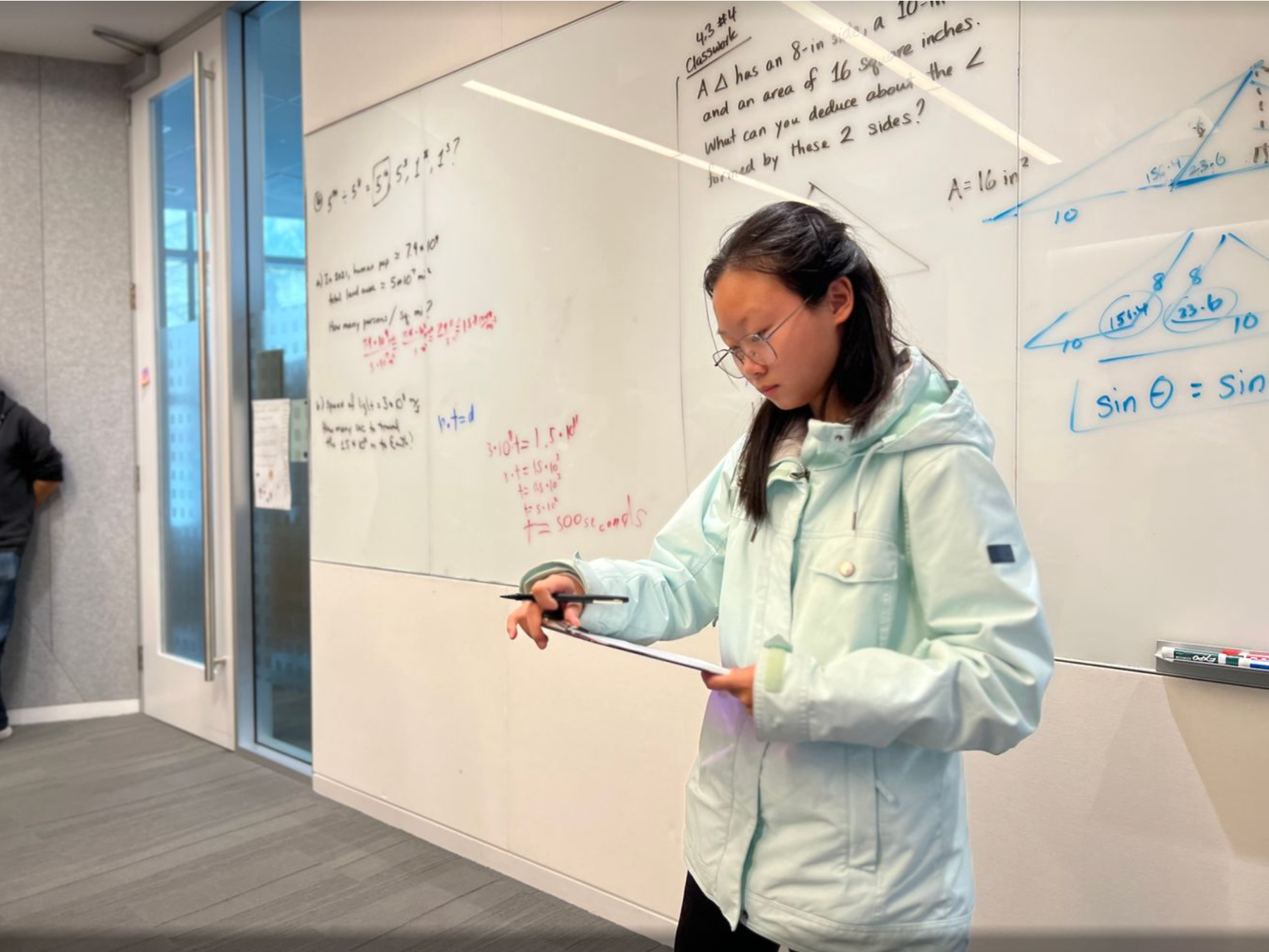This week, upper school faculty began a series of instructional rounds, following a structured format to generate shared questions about teaching & learning, to observe colleagues’ classes in a small group, and then to debrief their observations and create an artifact of their discussion (which then gets shared back to the colleague who was observed). As a result, this week I joined five different 9th grade classes!
In Mandarin, students partnered with our visiting students from China, and prepared a mini-lesson that they then taught to classmates about important terms or phrases. One student taught classmates to distinguish two negations, 不 (bù) and 没 (méi). “I’m also just writing the pinyin so I remember. I think I see the difference, then I can use the same examples to show them [classmates] why they’re different. Is one more like telling a fact and the other like answering questions that are more subjective?”
Next door in Spanish, students looked at a quick set of photos of famous people and practiced asking and answering questions like, “De dónde es?” and “Cuál es su nacionalidad?” as well as naming opinions like “I think él es poco viejo,” and “Sí! Me gusta Messi!”
In the next period, students walked around downtown spaces, identifying different architectural themes and taking photos with varying perspective, framing, and filtration to draw that element out. They critiqued and complimented peer’s work, like, “I think this one is for sure dynamic. I would know it even if you didn’t label it. But I think the slant of this is distracting. Can you make it so this line is straight up and down?”
I think this one is for sure dynamic. I would know it even if you didn’t label it.
In Calculus, students investigated algebraic and geometric ways of finding dot product and used what they already know to construct some of the formulas together. “I remember you said people who did this were like going against God or something, like mathematicians were violating norms talking about infinity.”
And in English, students did a quick warm-up imitating two recent poems they read about the immigrant experience, A Hymn to Childhood (by Yi Young-Lee) and On Being American (by Samira Ahmed). Filling in a portion of each poem with their own words, they then shared with a classmate and reflected on how imitation can reinforce a poem’s meaning, or challenge it. One student shared quietly to their neighbor, “Mine’s a little cringey. I was a really competitive child.”
Over the course of seven sessions this month, every faculty member will observe each of their colleagues twice, building shared ideas of what makes good practice at Hillbrook, as well as building connections, to content areas and one another, all so we can better see and engage students.

